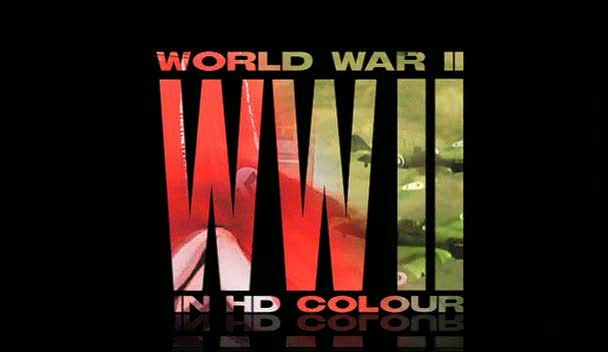World War II In HD Colour episode 4: When Hitler expounded his intention to invade Russia his generals looked at him in horrified silence. The Soviet Union was vast and had matchless resources. Hitler’s whole plan depended upon striking a swift and decisive knock-out blow. Get sucked into a long, drawn-out war and Germany would surely lose. Hitler was certain his forces could do it. No one had so far defeated them. But there had never been a military gamble like it. This film takes in Stalingrad and the battle of Kursk, the biggest tank battle in all history.
World War II in Colour is a 13-episode British television docuseries recounting the major events of World War II narrated by Robert Powell. It was first broadcast in 2008–2009. The series is in full colour, combining both original and colourized footage. The show covers the Western Front, Eastern Front, North African Campaign and the Pacific War. It was on syndication in the United States on the Military Channel.
World War II In HD Colour episode 4
Battle of Stalingrad
The Battle of Stalingrad, fought between August 23rd, 1942 and February 2nd, 1943, was a pivotal moment in the Eastern Front of World War II. The conflict was fought for control of the city of Stalingrad (later renamed Volgograd) in Southern Russia, and saw the Soviet Union successfully defend the city against the invading forces of Nazi Germany and its allies. The battle was characterized by intense, brutal close-quarters combat and indiscriminate bombing of civilian areas, and has come to symbolize the horrors of urban warfare.
The Battle of Stalingrad was one of the deadliest battles in the history of warfare, with an estimated 2 million total casualties. It was the largest and deadliest battle of the Second World War, with both sides suffering heavy losses. The battle has been widely regarded as a turning point in the European Theater of the war, as it forced the German High Command to withdraw significant military resources from other areas of occupied Europe in order to replace their losses on the Eastern Front. This ultimately led to the destruction of the German 6th Army and a significant portion of the 4th Panzer Army, and marked the beginning of the Soviet Union’s eventual victory over Nazi Germany.
The Soviet victory at Stalingrad was a major morale boost for the Red Army and marked a significant shift in the balance of power in favor of the Soviet Union. It also had a profound impact on the outcome of the war, as the German defeat at Stalingrad effectively ended the possibility of a German victory on the Eastern Front and paved the way for the eventual defeat of Nazi Germany. Today, the Battle of Stalingrad remains one of the most studied and analyzed engagements of the Second World War, and is considered a seminal moment in military history.
Battle of Kursk
The Battle of Kursk, fought during the late summer of 1943, was a significant engagement on the Eastern Front of World War II. It pitted the forces of Nazi Germany against the Soviet Union near the city of Kursk in the southwestern USSR. The battle ultimately became the largest tank battle in history, and is widely considered to be one of the most important engagements of the war.
The battle began with the launch of the German offensive Operation Citadel on July 5th, 1943. The goal of the operation was to encircle and destroy the Soviet forces in the Kursk salient, a bulge in the front line, by attacking from both the north and south simultaneously. However, the German offensive quickly stalled on the northern side of the salient. In response, on July 12th, the Soviet Union launched their own counteroffensive, Operation Kutuzov, targeting the rear of the German forces on the northern side. On the southern side, the Soviets also launched powerful counterattacks, one of which led to a large armored clash known as the Battle of Prokhorovka.
On August 3rd, the Soviets began the second phase of their offensive, known as Operation Polkovodets Rumyantsev, aimed at the German forces on the southern side of the salient. This operation, combined with the earlier Soviet counterattacks on the northern side, ultimately led to the collapse of the German offensive and the encirclement of the German forces in the Kursk salient. The battle was a significant defeat for Nazi Germany and marked the turning point in the war on the Eastern Front, as the Soviet Union gained the strategic initiative and never relinquished it until the end of the war.




